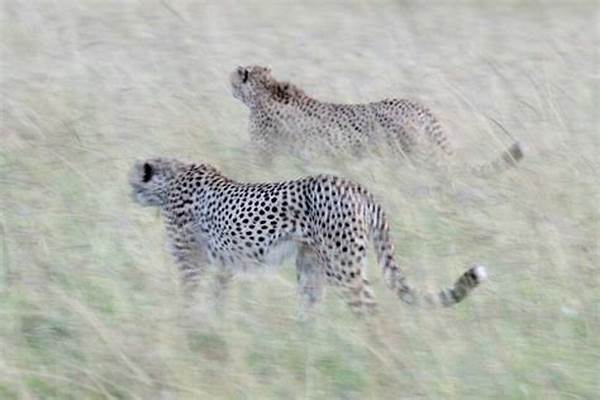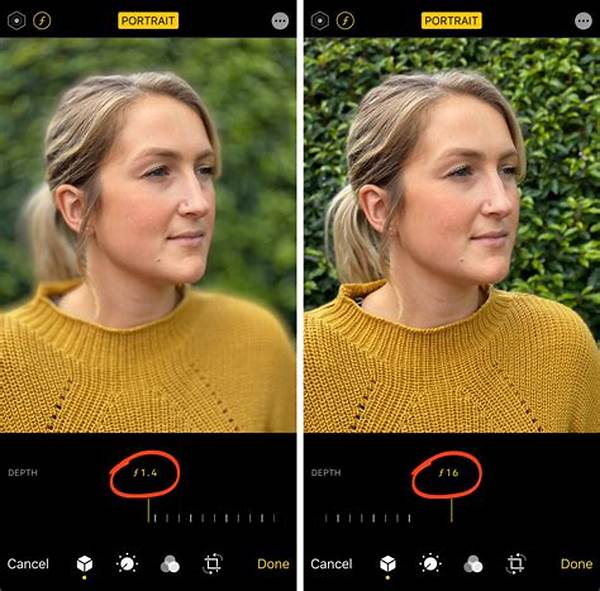Hey there, fellow shutterbugs! If you’ve ever tried snapping a quick shot of your furry companion or those elusive wildlife critters, you know it can be challenging. But worry not! Whether you’re an amateur or a seasoned photographer, capturing that perfect picture of fast-moving animals is totally doable with the right know-how. In this epic guide, we’re diving into the techniques for photographing rapid animals that’ll have you snapping like a pro in no time.
Read Now : High-definition Portrait Editing Tools
Capturing the Moment: Speedy Camera Settings
To nail those action shots, understanding your camera settings is crucial. First things first, let’s talk about shutter speed. This magical little setting can make or break your photo. For rapid animals, you’ll want a faster shutter speed – think between 1/1000 and 1/4000. These settings freeze the motion and keep your images crisp as a new dollar bill, even when your subject is darting around like it’s going out of style. But remember, in low light, this can be tricky, so don’t shy away from bumping your ISO or using the burst mode to capture a sequence.
Next up, let’s talk about focus modes. Setting your camera to continuous autofocus (AF-C in Nikon, AI Servo in Canon) helps keep moving subjects in focus. This is clutch when photographing rapid animals whose direction can change in a heartbeat. Imagine having a tail or a wing tack-sharp while the rest of your image is a beautiful blur. Lastly, consider leveraging manual mode to control exposure and capture those rapid movements just the way you envision.
Essential Gear for Action Shots
1. Zoom Lenses: Having a versatile zoom lens gives you the flexibility to capture your subject even from a distance. It’s a crucial part of the techniques for photographing rapid animals.
2. Tripod or Monopod: Keep your hands free and steady to avoid any unintended camera shakes.
3. High-Speed Memory Cards: You’ll need these because when you get into burst mode, the last thing you want is for your camera to slow down!
4. External Flash: Sometimes, natural light isn’t on your side. A speedlight or external flash can help keep the scene well-lit.
5. Camera Strap: When you’re moving around to keep up with active critters, a trusty camera strap can be a lifesaver to avoid accidental drops.
Timing is Everything
Remember the golden rule of photography: timing is everything. When it comes to techniques for photographing rapid animals, understanding the behavior and habits of your subject can make a world of difference. Spend time observing your subject’s common actions or routines. Are there specific times they’re more active or approachable? Maybe dawn or dusk? Knowing when your subject is most likely to be in motion or if there’s a window when they pause could offer numerous photo opportunities.
Plan your sessions during these time frames, and when the time comes, stay poised on your camera with fingers steady on the shutter. A little patience goes a long way. After all, nature doesn’t work on our schedule, and every second matters when you’re aiming for that perfect capture. And when the moment presents itself—click away!
The Art of Patience in Wildlife Photography
1. Observation First: Watch your subject for a while before shooting, helping you anticipate movements—a vital part of the techniques for photographing rapid animals.
2. Staying Low: Lower your height to that of your subject. This perspective offers intimate and personal shots.
3. Reduce Distractions: Focus solely on your subject; this will help mitigate disturbances when photographing rapid animals.
4. Be Unpredictable – Switch things up! Adjusting your angle and timing keeps you ahead of unpredictable animal movements.
Read Now : Promoting Eco-friendly Observation Methods Globally
5. Dress for the Occasion: Blending in with the environment can often help in getting closer shots without alarming your subject.
6. Build a Connection: If it’s a pet, building rapport makes photographing rapid animals easier over time.
7. Use Natural Light: Utilize dawn and dusk when natural light is softer and more magical.
8. Listen to Nature: Natural sounds can give clues about animal behavior—a different angle on techniques for photographing rapid animals.
9. Learning Curve: Accept that not every shot will be perfect. Learn from each click and adapt your techniques.
10. Patience is Key: Remain patient and wait for the perfect shot; nature photography is about quality, not quantity.
Getting to Know Your Subject
Understanding your subject is as important as understanding your camera settings. Whether you’re photographing a hummingbird in your backyard or a cheetah on safari, knowledge is power. Start by researching your subject. Knowing their habits, preferred habitats, and common behaviors can give you a leg up. For techniques for photographing rapid animals, it helps to know when they’re likely to be on the move or resting.
Once you’ve done some homework, apply what you’ve learned in practice. Spend time watching your subject before diving in with your camera. It sheds light on their patterns and movements which can be incredibly rewarding. A little patience spent observing is often repaid with fantastic photos. Test different angles and settings to find what gets you the best results. You’ll find cheeky little raccoons or agile squirrels giving you the most charming and memorable images when you least expect it!
The Fun in Experimentation
Getting experimental with your photos can lead to spectacular results! While you should aim to perfect the basic techniques for photographing rapid animals first, don’t be afraid to try new things. Adjust the white balance or play with the aperture settings to add a creative twist. Capture a high-contrast image against a bright background or attempt some dramatic silhouettes for a breathtaking effect.
Remember, not every shot needs to be perfect, and experimenting is half the fun. Wouldn’t it be delightful to capture a motion blur of a sprinting fox or the mesmerizing swirl of a bird’s wings? Playing around helps build your skills and nurtures creativity. Over time, you’ll form your own unique style, portraying the breathtaking energy and grace of these wonderful creatures!
Wrapping It All Up
So folks, whether you’re snapping shots of your furry friend in the backyard or chasing an antelope in the wild, these techniques for photographing rapid animals are your gateway to capturing stunning action photographs. Just remember, achieving the perfect shot is about practice, patience, and sometimes a dash of beginner’s luck. Wait for the right moment, and you’ll create incredible memories that last a lifetime. Keep shooting, and happy snapping!



